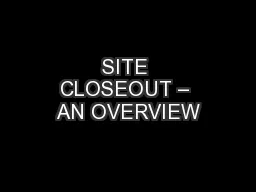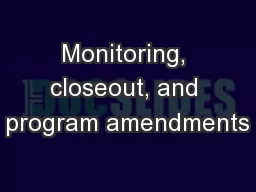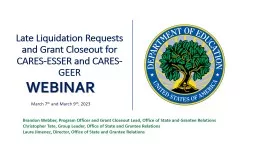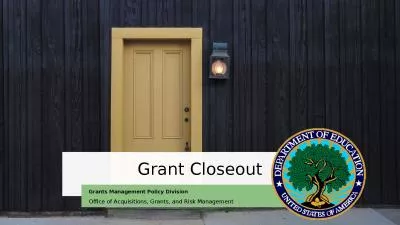PPT-1 Closeout Report on the
Author : projoutr | Published Date : 2020-06-25
DOESC CD2 Review of the Dark Energy Spectroscopic Instrument DESI Project Lawrence Berkeley National Laboratory July 2830 2015 Kurt Fisher Committee Chair Office
Presentation Embed Code
Download Presentation
Download Presentation The PPT/PDF document "1 Closeout Report on the" is the property of its rightful owner. Permission is granted to download and print the materials on this website for personal, non-commercial use only, and to display it on your personal computer provided you do not modify the materials and that you retain all copyright notices contained in the materials. By downloading content from our website, you accept the terms of this agreement.
1 Closeout Report on the: Transcript
Download Rules Of Document
"1 Closeout Report on the"The content belongs to its owner. You may download and print it for personal use, without modification, and keep all copyright notices. By downloading, you agree to these terms.
Related Documents














